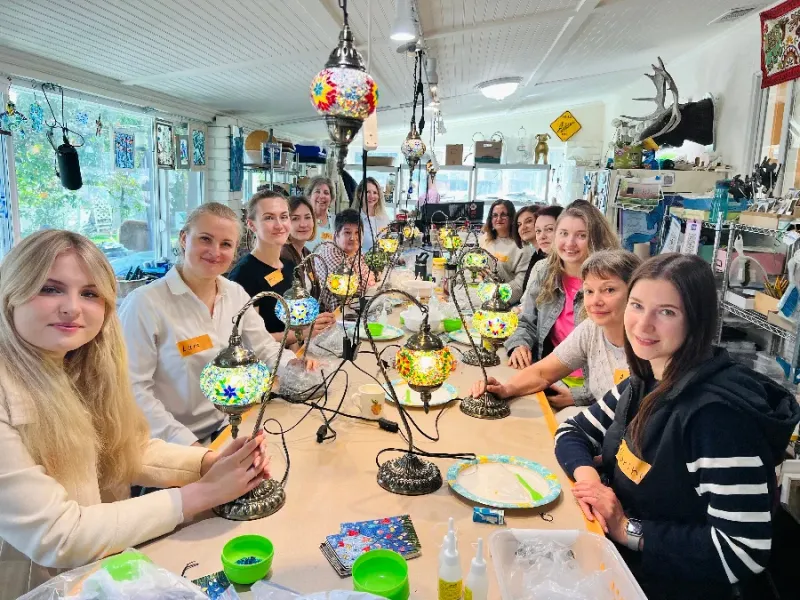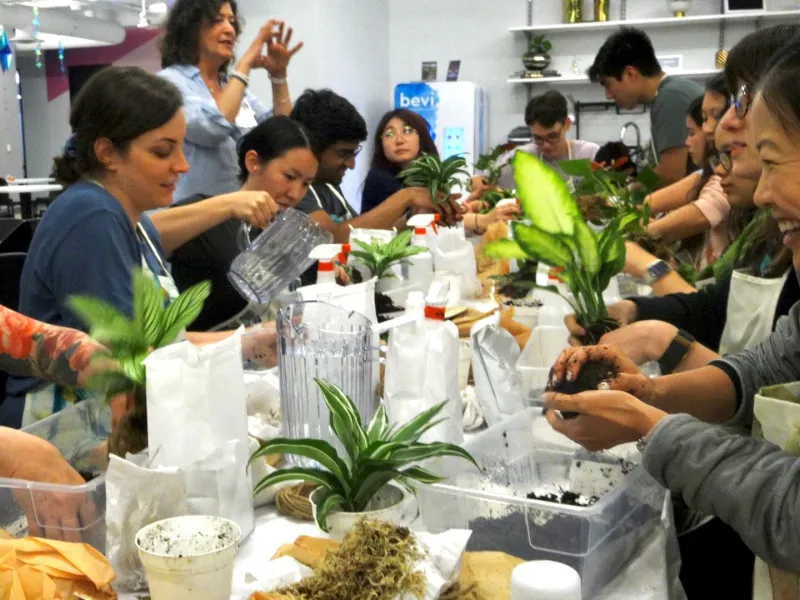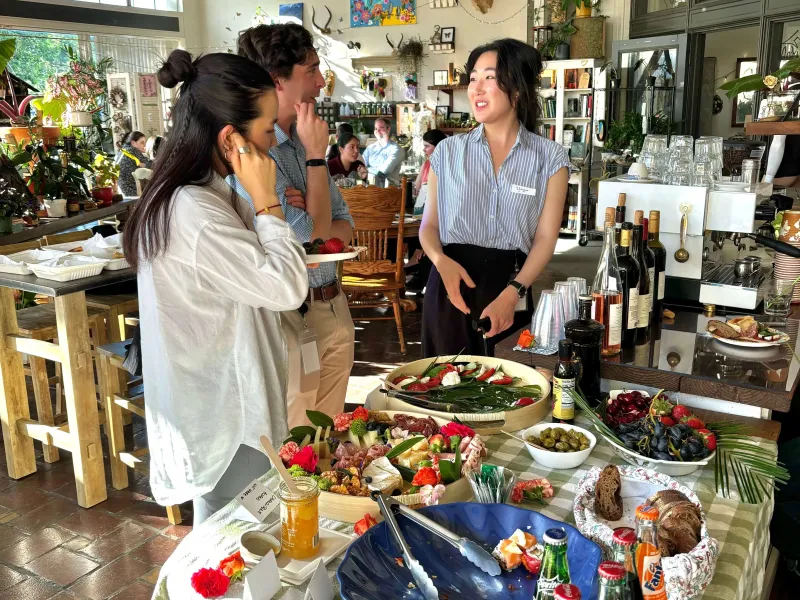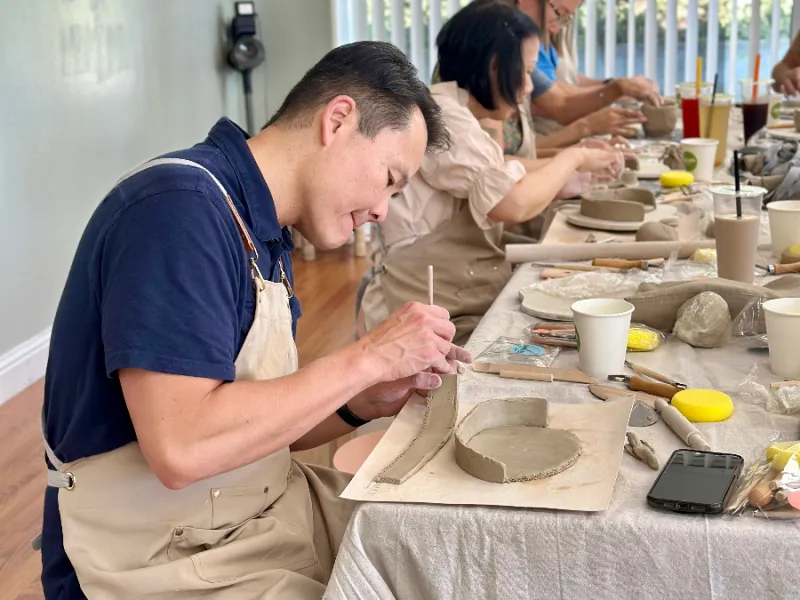15 Quick Team-Building Activities Under 10 Minutes

Team-building activities don’t have to be full-day sessions or weekend retreats. Sometimes, the most effective exercises can happen in just a few minutes! Below, you’ll find 15 engaging ideas to help your team bond, spark creativity, and maintain high morale—all in under 10 minutes.

1. The Name Game with a Twist
Time Needed: 5–10 minutes
Objective: Help team members learn each other’s names, establish rapport, and spark creativity.
How It Works:
- Gather in a circle.
- Each person says their name and an adjective starting with the same letter (e.g., “I’m Marvelous Mary”).
- The next person repeats all previous names and adjectives before adding their own. Continue until everyone’s introduced.
Why It’s Good & How It Helps:
- Encourages Active Listening: By recalling everyone’s name and adjective, participants practice remembering details about their peers.
- Breaks the Ice: The playful nature of choosing adjectives promotes a relaxed, open atmosphere.
- Establishes Connection: Having to recall names helps everyone feel seen and included from the start.
2. Two Truths and One Fib
Time Needed: 5–10 minutes
Objective: Encourage team bonding through personal stories and clever guessing.
How It Works:
- Each participant writes down three statements about themselves—two true, one false.
- Everyone reads their statements aloud.
- The group votes on which one they think is the fib.
- Reveal the lie and share brief backstories about the truths.
Why It’s Good & How It Helps:
- Sparks Curiosity: People learn interesting facts about each other beyond the usual workplace conversations.
- Builds Empathy: As teammates discover personal tidbits, they often find common ground, fostering better understanding and stronger bonds.
- Promotes Interaction: Guessing the fib and revealing personal stories lead to lively discussions, laughter, and a positive team vibe.
3. Rapid-Fire Brainstorm
Time Needed: 5–10 minutes
Objective: Encourage quick, creative problem-solving and collaboration.
How It Works:
- Present a short, open-ended question or challenge (e.g., “How can we improve our onboarding experience?”).
- Set a timer (3–4 minutes).
- Each person writes down as many ideas as possible—no judgments or critiques allowed.
- Share briefly to see which ideas might merit follow-up.
Why It’s Good & How It Helps:
- Jumpstarts Innovation: Quick thinking can surface unexpected, fresh ideas.
- Breaks Hierarchy: Everyone can contribute on an equal footing, regardless of title or position.
- Builds a Creative Culture: Short bursts of brainstorming instill a habit of generating and sharing ideas.
4. Circle of Compliments
Time Needed: 5–10 minutes
Objective: Build trust and positivity by recognizing each other’s strengths.
How It Works:
- Gather in a circle (in person or virtually).
- Each person turns to the next and offers a genuine compliment (e.g., “I love how you always bring new ideas to the table!”).
- Keep rotating until everyone has both given and received a compliment.
Why It’s Good & How It Helps:
- Boosts Morale: Publicly recognizing positive qualities enhances self-esteem and motivation.
- Fosters Trust: Genuine praise fosters a sense of safety and respect.
- Creates Positive Dynamics: When people feel appreciated, they’re more inclined to collaborate effectively.
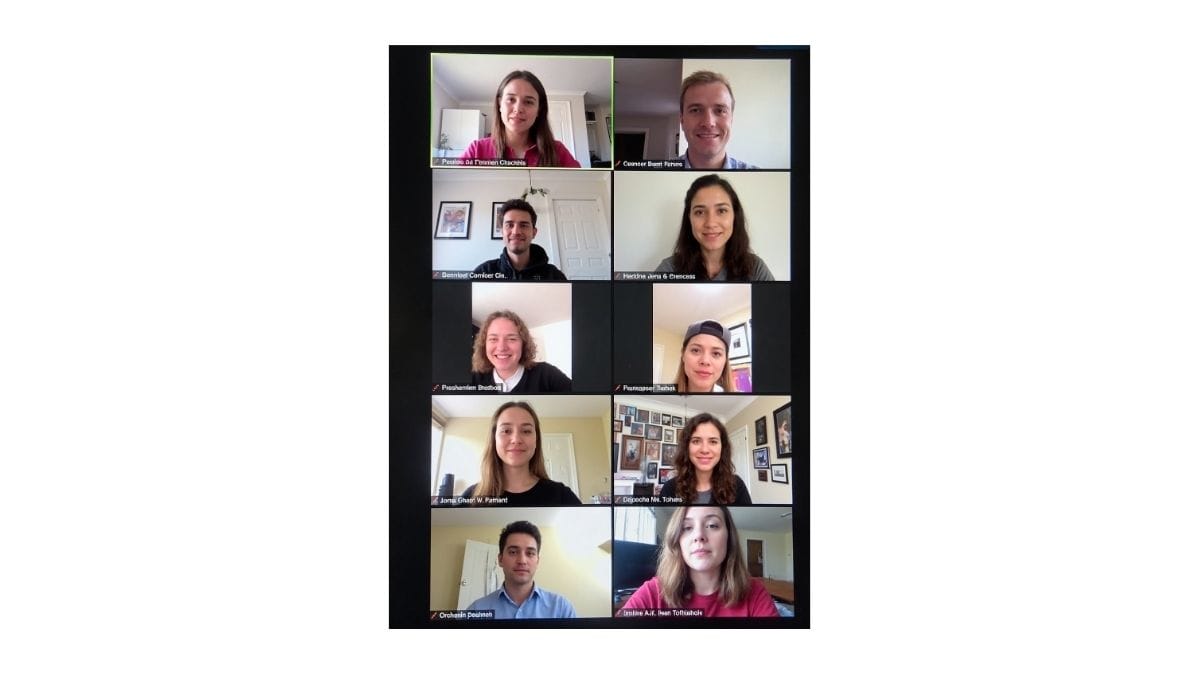
5. Speed Networking
Time Needed: 5–10 minutes
Objective: Facilitate quick introductions and connections between colleagues.
How It Works:
- Pair team members in twos.
- Give each person one minute to share something about themselves (personal or professional).
- After two minutes total, ring a bell or give a signal to switch partners.
- Repeat until time’s up.
Why It’s Good & How It Helps:
- Encourages New Connections: People who rarely interact get a chance to talk one-on-one.
- Improves Communication Skills: Sharing information in concise timeframes helps hone clarity and brevity.
- Builds Rapport: Rapid, casual chats can reveal unexpected common interests, promoting camaraderie.
6. One-Minute Story
Time Needed: 5–10 minutes
Objective: Improve communication skills and creativity in a fast-paced scenario.
How It Works:
- Divide into groups of three or four.
- Provide a playful prompt (e.g., “A penguin just walked into our office wearing a sombrero. What happens next?”).
- Each group has one minute to craft a micro-story.
- A spokesperson quickly shares it with the whole team.
Why It’s Good & How It Helps:
- Nurtures Creativity: Silly prompts encourage out-of-the-box thinking.
- Enhances Teamwork: Coming up with a tiny story together demands quick collaboration.
- Lightens the Mood: Short bursts of humor relieve stress and remind everyone work can be fun.
7. Alphabet Challenge
Time Needed: 5 minutes
Objective: Strengthen quick thinking, cooperation, and recall.
How It Works:
- Select a topic relevant to your field (e.g., “Customer Service Best Practices”).
- Go around the circle; each person must say a related word or phrase starting with the next letter of the alphabet.
- Keep going until you reach Z or run out of time!
Why It’s Good & How It Helps:
- Improves Focus: Participants must listen to what’s said before them to avoid repeats.
- Reinforces Knowledge: Using a work-relevant topic helps ingrain important concepts.
- Builds Team Energy: The quick pace creates a dynamic, enjoyable group atmosphere.
8. Quick Poll “Would You Rather?”
Time Needed: 5 minutes
Objective: Spark fun debates and get to know each other’s personal preferences.
How It Works:
- Present simple “Would you rather?” questions (e.g., “Work from the beach or a mountain cabin?”).
- Participants quickly vote or move to a designated side to show their choice.
- Invite a few people to share why they chose their option.
Why It’s Good & How It Helps:
- Fosters Conversation: Lighthearted questions get people talking and comparing viewpoints.
- Builds Personal Connections: Teammates see a bit of each other’s lifestyle preferences or sense of humor.
- Injects Fun: Quick, silly debates energize the room without taking up too much time.
9. High-Five Chain Reaction
Time Needed: 2–3 minutes
Objective: Energize the team with a quick burst of positivity.
How It Works:
- Stand in a large circle.
- One person starts by high-fiving someone across the circle, shouting something positive (“Great job!”).
- The receiver then high-fives someone else. Continue until everyone has given and received at least one high-five.
Why It’s Good & How It Helps:
- Boosts Energy: Physical movement combined with positive shout-outs quickly raises morale.
- Unifies the Group: A shared, upbeat activity reminds everyone they’re on the same team.
- Breaks Tension: This simple gesture relaxes the atmosphere and clears the mental slate.
10. Quick Draw Pictionary
Time Needed: 5–10 minutes
Objective: Promote quick thinking, visual communication, and team laughter.
How It Works:
- Prepare a short list of items or concepts to draw (e.g., “Laptop,” “Sailboat,” “Coffee Mug”).
- Split into pairs or small teams.
- One person draws for 30 seconds; teammates guess what it is.
- See how many items can be guessed before time’s up.
Why It’s Good & How It Helps:
- Encourages Nonverbal Communication: Teammates must interpret visual cues quickly.
- Stimulates Creativity: Drawing challenges the brain in a different way than typical desk work.
- Cultivates Team Spirit: Shared laughter over silly sketches unites the group.
11. Shout-Out Shuffle
Time Needed: 5 minutes
Objective: Publicly acknowledge individual contributions to foster appreciation and camaraderie.

How It Works:
- Collect short thank-you notes or shout-outs from team members beforehand.
- Randomly pick a few to read aloud.
- Give a round of applause or quick cheer for the person recognized.
- Repeat with multiple notes if time allows.
Why It’s Good & How It Helps:
- Builds a Positive Culture: Recognition is crucial for job satisfaction and motivation.
- Strengthens Relationships: Hearing peers praise each other encourages a supportive environment.
- Promotes Gratitude: Focusing on positives helps offset everyday stress and deadlines.
12. Paper Airplane Roundtable
Time Needed: 5 minutes
Objective: Combine fun with quick feedback or personal insights.
How It Works:
- Each person writes a short note, suggestion, or fun fact on a paper.
- Fold it into a paper airplane.
- On the count of three, everyone launches their planes.
- Pick up someone else’s plane and read the note (aloud or silently, depending on privacy).
Why It’s Good & How It Helps:
- Adds Novelty: Simple tasks like folding airplanes inject fun into mundane meetings.
- Elicits Honest Feedback: The anonymity can encourage candid thoughts or praise.
- Encourages Engagement: Everyone participates and feels included.
13. The One-Word Check-In
Time Needed: 2–3 minutes
Objective: Quickly gauge team members’ emotional state before or after a meeting.
How It Works:
- Each person shares one word describing how they feel.
- No explanation needed unless someone wants to elaborate.
- Create a supportive, nonjudgmental atmosphere.
Why It’s Good & How It Helps:
- Promotes Empathy: Hearing each other’s emotional states fosters understanding and kindness.
- Saves Time: A single word check-in is quick yet revealing.
- Allows Leaders to Adapt: If many feel “overwhelmed,” leaders can adjust the meeting tone or offer support.
14. The Standing Ovation
Time Needed: 2 minutes
Objective: Offer excitement and appreciation for a teammate’s achievement.
How It Works:
- Select someone who recently hit a milestone or performed exceptionally.
- Have the whole team stand, cheer, and clap for 10–15 seconds.
- Optionally, share one line about why they deserve the applause.
Why It’s Good & How It Helps:
- Recognizes Excellence: Publicly celebrates individual contributions, reinforcing a recognition culture.
- Uplifts Spirits: The energy of a standing ovation can be infectious and inspiring.
- Fosters a Gratitude Habit: Regular acknowledgment makes everyone more aware of each other’s efforts.
15. Memory Lane in 60 Seconds
Time Needed: 5–10 minutes (depending on group size)
Objective: Reflect on shared accomplishments or humorous moments to strengthen team identity.
How It Works:
- Give everyone a sticky note.
- Ask them to write down a quick, positive team memory (e.g., a fun event, a big success).
- Stick the notes on a wall or board.
- Randomly pick a few to read aloud.
Why It’s Good & How It Helps:
- Builds Team Identity: Recalling collective successes reminds everyone what they can achieve together.
- Creates Nostalgia & Humor: Sharing funny stories or milestones fosters warmth and unity.
- Great Meeting Closer: Ending on positive reflections boosts morale and sets an optimistic tone.
Why These 10-Minute-or-Less Activities Matter
Brief team-building activities are surprisingly impactful because they:
- Foster Deeper Connections: Quick, upbeat moments of shared laughter or conversation deepen interpersonal bonds.
- Improve Communication: Even short exercises can reveal strengths, preferences, and communication styles.
- Boost Morale: Positive reinforcement and group appreciation keep people motivated.
- Inspire Creativity: Shaking up routine with short bursts of fun encourages innovative thinking for bigger tasks.
Try sprinkling these mini team-building ideas throughout your workweek—before meetings, during breaks, or as end-of-day pick-me-ups. In just a few minutes, you can raise energy levels, enhance trust, and create an environment where people genuinely enjoy working together.



